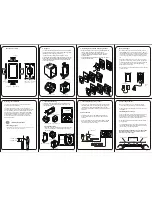
Page 40 of 49
TTI-22 Iss.04– 11/15
Appendix D: Temperature Calculation Methods
TTI-22 employs two methods for calculating the temperature from the primarily measured property "ohmic
resistance": The DIN IEC 751, which describes the relation between resistance and temperature for industrial
sensors, and the ITS-90 (International Temperature Scale 1990), the temperature scale valid for standard
thermometers since 1990.
D.1
DIN IEC 751: Industrial Platinum Resistance Thermometers and Platinum
Measuring Resistors
The DIN IEC 751 defines requirements for industrial platinum resistance thermometers whose electrical
resistance is a defined function of the temperature. It is valid for platinum thermometers in the temperature
range of -200 °C to +850 °C.
Basic values
The relation between electrical resistance and temperature is defined as follows:
Range -200 °C to 0 °C:
(Equ. 1)
R
t
= R
0
[1 + At + Bt
2
+ C(t - 100 °C)t
3
]
Range 0 °C to 850 °C:
(Equ. 2)
R
t
= R
0
(1 + At + Bt
2
)
Constants:
Variables:
A = 3.9083 x 10-3 °C-1
t…..Temperature in °C
B = -5.775 x 10-7 °C-2
Rt…Resistance at temperature t
C = -4.183 x 10-12 °C-4
R0…Resistance at 0°C
The basic values for platinum resistance thermometers are calculated from the equations (1) or (2).
Nominal values
The nominal value for platinum resistance thermometers usually is 100
Ω
(at 0 °C).
Limiting deviations
Two classes of resistance thermometers are discerned based on their limiting deviations:
Class
Limiting deviations in °C
A
0.15 + 0.002 * |t|
a
B
0.3 +0.005 * |t|
a
|t|…Absolute numerical value of the temperature in °C
Thermometers with a nominal value of 100
Ω
have to be classified based on the limiting deviations.
Class A cannot be used for Pt 100 above 650 °C and thermometers with 2-wire connection of the sensor.










































